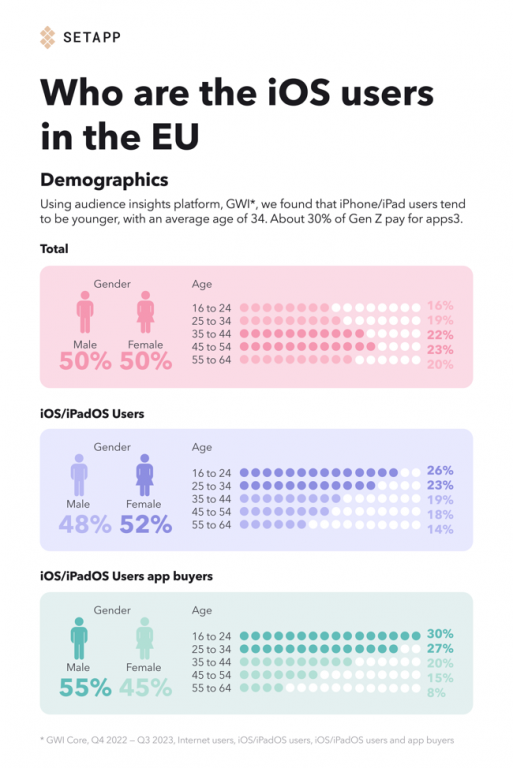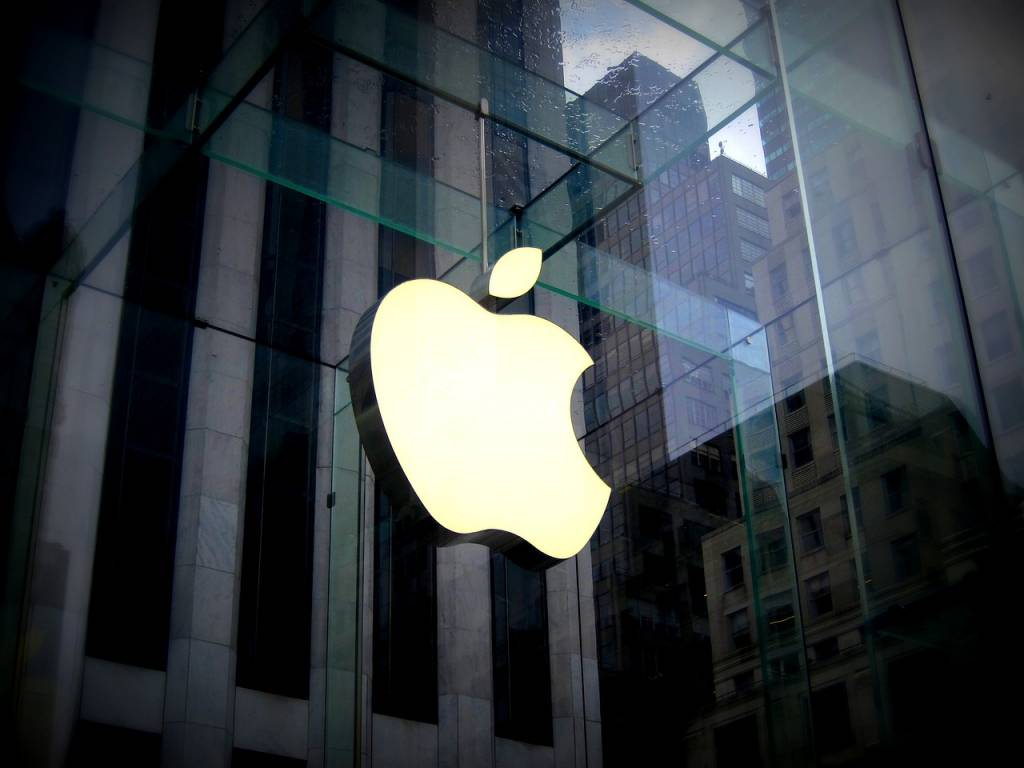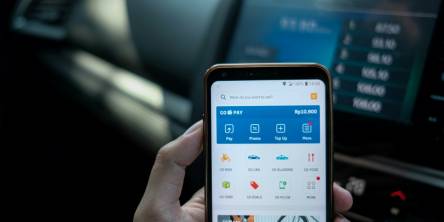5 Ways To Improve App Localization for EU IOS Users

Localizing an app for the European Union improves user experience and increases engagement. The EU comprises 27 member states with specific languages, cultures, and preferences.
This region has 450 million citizens, representing a vast opportunity for many app developers.
In this article, we’ll cover five practical ways to improve app localization specifically for iOS users in the EU.

Image by setapp.com
1. Adapt To Different Languages
Europe has a rich pallet of languages. Therefore, language support is a top priority for localization. While English is used as a common language, many users prefer their native tongues.
That’s why you must ensure your app supports several languages. Include German, French, Spanish, Italian, and Swedish, as they cover much of the EU.
EU iOS user preferences can be met with automated translation tools. Skilled translators can provide accurate translations and convey cultural differences. Localizing content isn’t just translation. It's also about adapting idioms and phrases to resonate with local expressions.
By working with native speakers, you’ll ensure that your app communicates in a clear way that your audience understands.
2. Adapt to Different Cultures
Cultural context matters a lot in localization. What works in one country might not resonate in another, and images, colors, and symbols can mean different things.
When considering user interface design, know that color can signify different things in various countries. For example, red can symbolize love in some cultures but danger in others. Understanding these differences allows you to make a versatile interface.
You should also tailor your marketing messages to show you understand culture and traditions. Incorporate specific holidays and events into your app and your promotions.
By showing them your familiarity with their culture, you build a stronger connection with your users, who will become super engaged and loyal.
Read more: iOS Testing Frameworks: Tips to Select
3. Optimize Specific Currency
 Image by NoName_13 from Pixabay
Image by NoName_13 from Pixabay
When targeting EU iOS users, your app must have relevant currency and measurement units. Most Europeans use the euro, but some countries still rely on their national currencies, such as the Bulgarian lev or Turkish lira. Giving your users the option to select their preferred currency enhances usability and comfort in a big way.
You should also adapt measurement units to fit local preferences because although the metric system is usually the same across Europe, certain countries may have specific preferences. For example, the UK often uses miles for distance. Therefore, adapting to their local conventions can make the app easier to use.
Ensure your pricing is affordable to specific countries so your app isn’t perceived as too high and cheap. Market research will help you explore the currencies and set appropriate price tags that resonate with your desired audience.
4. Get Familiar With Local Regulations
 Image by dongni wang from Pixabay
Image by dongni wang from Pixabay
Many different EU countries have varying regulations. It’s especially evident regarding data privacy and user protection. That’s why studying the General Data Protection Regulation (GDPR) is vital if you want your app to comply with its unique guidelines.
It’s best to communicate how you handle user data and obtain explicit consent where necessary because it will take your stress away.
After the GDPR part, focus on specific local regulations that may apply since advertising standards and e-commerce regulations can differ significantly across the EU.
You need to be aware of all the restrictions on promotional content, especially regarding gambling or health apps. By having all these regulations in mind, you’ll definitely avoid legal issues and show your commitment to providing a fantastic app with a great user experience.
Make sure your app's terms of service and privacy policy are clear. Also, make it available in all supported languages. That transparency builds trust, as users will appreciate your commitment to their rights and safety.
You May Also Like: 6 Factors Influencing App Usage That Every iOS App Development Company Must Know
5. Gather Good Feedback for Continuous Growth
 Image by Matias Cruz from Pixabay
Image by Matias Cruz from Pixabay
Localization is usually a long process, so after launching your localized app, it’s vital to collect good user feedback.
You can utilize surveys, app feedback forms, or user testing sessions to gather insights on their experience and opinions. You can ask them about the app’s language accuracy, cultural points, and overall ease of use.
Feedback from your users helps you immensely in identifying areas for improvement. Try to implement regular updates based on their suggestions. That will show you’re professional and you genuinely want to meet their needs.
This proactive approach will make them loyal and encourage them to advocate for your app within their social circle.
Also, think about setting up a forum or social media group where they can share their thoughts. Engaging with your audience will always create a sense of friendliness and ensure you’re in tune with their needs.
Conclusion
If you wish to improve app localization for EU iOS users, you must approach it carefully. Prioritize language diversity, cultural differences, regulations, and user feedback. If you do it right, it will produce more profound and more meaningful connections with your users.
If you follow all the steps above, you'll create a user-friendly and culturally relevant experience. That will help you get many incredible benefits. If you localize correctly, your app will gain much popularity across Europe.
So select your audience and try to bring the most value to them. That’s the only way to make a difference and inspire people.
Similar Articles
Discover the top 10 mobile app development trends of 2024! Explore 5G, AI, AR/VR, blockchain, and more to stay ahead in the ever-evolving app development landscape.
With its triple-lens design and fantastic photo and video quality, the iPhone 11 Pro Max is extensively acknowledged for its superior camera system. But problems can occur with also one of the most advanced technologies. If you're having issues with the iPhone 11 pro max camera lens, knowing the typical problems and how to repair them
Protect your app from threats with AppSealing's robust, all-inclusive security solution. Safeguard user data, ensure compliance, and maintain top performance.
Selling products online has become an increasingly popular way to reach potential customers. Online marketplaces are a great platform to showcase your products, but managing multiple listings on various platforms can be quite time-consuming.
Enterprise app development has emerged as a crucial driver for maximizing return on investment (ROI). By streamlining operations, enhancing customer engagement, and enabling data-driven decision-making, custom enterprise applications empower organizations to achieve their strategic goals efficiently.
Understand the influence AI developers have on today's app and web creation, driving efficiency and innovation.
The amalgamation of technology and innovation has revolutionized the financial services sector, leading to the birth and rapid growth of the FinTech industry. It is vital to understand that robust mobile app development services stand at the forefront of this innovation, paving the way for seamless, secure, and user-friendly solutions that cater to the evolving needs of modern consumers.
Financial technology, or FinTech, has evolved rapidly, and fintech apps are gaining popularity. These apps offer services ranging from mobile banking to investments and have changed the way users view and interact with financial services.
Incompatibility is a common issue in software development and can happen for many reasons, such as different versions, data format inconsistency, or contrasting process logic. Integration testing is the process that helps find these inconsistencies between different software modules.









